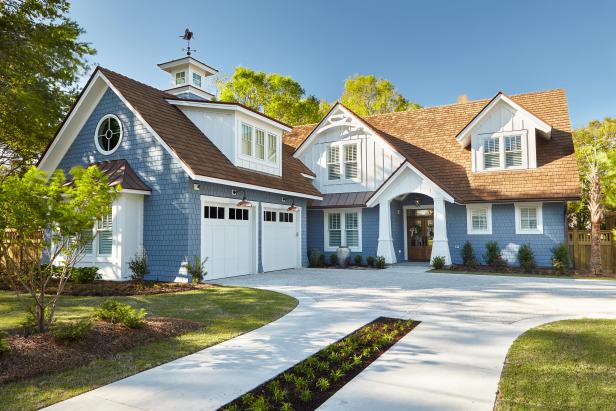Creating a restaurant interior that is both aesthetically pleasing and functional is a significant challenge. Incorporating a pure air system into this design adds another layer of complexity, but it is essential for ensuring a healthy and comfortable dining experience. This comprehensive guide explores the various aspects of restaurant interior design with a focus on integrating a pure air system, Restaurant Lighting, considering factors such as layout, materials, technology, and ambiance.
Importance of a Pure Air System in Restaurants
Before delving into the specifics of design, it’s crucial to understand why a pure air system is vital for restaurants.
- Health and Safety: Restaurants are high-traffic areas where contaminants such as smoke, cooking fumes, and pathogens can accumulate. A pure air system helps to eliminate these pollutants, ensuring a safer environment for both customers and staff.
- Enhanced Dining Experience: Clean air significantly enhances the dining experience. It prevents unpleasant odors from lingering, maintains a fresh atmosphere, and ensures that the taste and aroma of food are not compromising.
- Compliance with Regulations: Many health and safety regulations require restaurants to maintain a certain level of air quality. A pure air system helps in meeting these standards, avoiding potential fines and ensuring a reputation for cleanliness and safety.
- Comfort and Well-being: Good air quality contributes to the overall comfort and well-being of diners, making them more likely to return. It also creates a more pleasant working environment for staff, improving morale and productivity.
Integrating a Pure Air System: Key Considerations
1. Planning and Layout
The first step in integrating a pure air system is careful planning and layout design. This involves strategic placement of air purifiers and ventilation systems to ensure optimal airflow and coverage.
- Entrance and Lobby Areas: These high-traffic areas can benefit from air curtains or vestibules that prevent outdoor pollutants from entering the restaurant.
- Dining Area: Ensure even distribution of air purifiers throughout the dining space to avoid areas with stagnant air. Ceiling-mounted or wall-mounted units can be used to save space.
- Kitchen: The kitchen requires robust ventilation to handle cooking fumes and heat. High-capacity exhaust hoods and make-up air units are essential.
- Restrooms: Ensure proper ventilation in restrooms to prevent odors from spreading to other areas.

2. Choosing the Right Air Purification Technology
Several types of air purification technologies can be used in restaurants, each with its own benefits:
- HEPA Filters: High-Efficiency Particulate Air (HEPA) filters are effective at trapping airborne particles, including dust, pollen, and pathogens. They are suitable for both dining and kitchen areas.
- UV-C Light: Ultraviolet Germicidal Irradiation (UVGI) uses UV-C light to kill bacteria and viruses. This technology can be integrated into HVAC systems or used in standalone units.
- Activated Carbon Filters: These filters are excellent for removing odors and volatile organic compounds (VOCs). They are ideal for use in kitchens and areas near restrooms.
- Ionizers and Ozone Generators: These devices release ions or ozone to neutralize airborne contaminants. However, they should be used cautiously, as high levels of ozone can be harmful.
3. Material Selection
The materials used in the restaurant’s interior design can significantly impact air quality. Choosing the right materials can complement the pure air system and enhance overall effectiveness.
- Flooring: Opt for materials that are easy to clean and do not trap dust or allergens, such as tile, polished concrete, or hardwood. Avoid carpets as they can harbor contaminants.
- Wall Finishes: Use low-VOC paints and finishes to minimize the release of harmful chemicals. Consider antimicrobial coatings for added protection.
- Furniture and Upholstery: Select furniture made from non-toxic materials and fabrics that are easy to clean. Consider using leather or faux leather upholstery, which does not absorb odors.
- Ventilation and Ductwork: Ensure that all ductwork is properly sealed and insulated to prevent leaks and maintain efficiency. Regular cleaning of ducts is also crucial to prevent buildup of contaminants.
4. Aesthetic Integration
A pure air system should be seamlessly integrated into the restaurant’s design to maintain aesthetic appeal. This involves choosing air purifiers and ventilation units that complement the overall style and ambiance.
- Concealed Units: Use architectural features such as false ceilings, decorative panels, or custom enclosures to hide air purification units without compromising their functionality.
- Design Harmony: Select air purifiers and vents that match the restaurant’s design theme. For example, sleek, modern units can complement a contemporary design, while more ornate options might suit a traditional setting.
- Lighting: Incorporate lighting that highlights the air purification units subtly, making them part of the overall decor. LED lights can be used to create a modern, clean look.
Creating the Right Ambiance
1. Lighting: Lighting plays a crucial role in creating the right ambiance. Use a combination of natural light, task lighting, and ambient lighting to create a welcoming atmosphere.
- Natural Light: Maximize the use of windows and skylights to bring in natural light, which can enhance the perception of clean air and openness.
- Task Lighting: Use focused lighting in key areas such as dining tables and the bar to create a cozy and intimate setting.
- Ambient Lighting: Soft, diffused lighting can create a warm and inviting atmosphere. Consider dimmable options to adjust the lighting based on the time of day and desired mood.
2. Acoustics: Good acoustics contribute to a comfortable dining experience. Use materials that absorb sound, such as acoustic panels, upholstered furniture, and heavy drapes.
3. Green Elements: Incorporating plants and greenery can enhance air quality and create a refreshing ambiance. Use plants that are known for their air-purifying properties, such as spider plants, peace lilies, and Boston ferns.
4. Layout and Spacing: Ensure that the layout allows for adequate spacing between tables to promote social distancing and airflow. This not only enhances comfort but also helps in maintaining better air quality.
5. Cleanliness and Maintenance: Regular cleaning and maintenance are crucial for the effectiveness of the pure air system. Establish a routine cleaning schedule for all air purification units, filters, and ventilation systems.
6. Customer Communication: Inform customers about the steps taken to ensure air quality. Visible signage or digital displays can highlight the presence of a pure air system, providing reassurance and enhancing the restaurant’s reputation for cleanliness and safety.
Final Words
Integrating a pure air system into restaurant interior design is a multifaceted process that involves careful planning, material selection, and aesthetic considerations. By focusing on health and safety, enhancing the dining experience, and maintaining a pleasant ambiance, restaurants can create a space that is not only visually appealing but also ensures the well-being of their customers and staff. As awareness of air quality continues to grow, the importance of these systems in hospitality settings will only become more pronounced, making them a key element of modern restaurant design.




